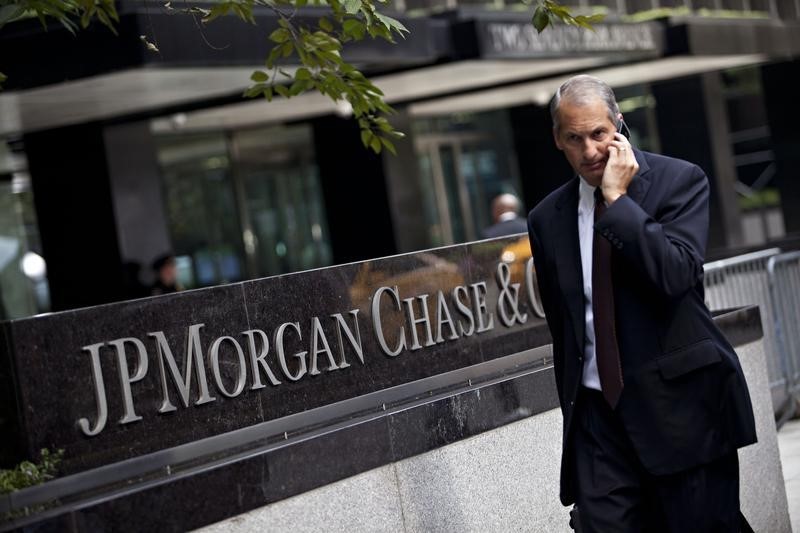© Reuters. FILE PHOTO: A view of the exterior of the JP Morgan Chase & Co. corporate headquarters in New York City May 20, 2015. REUTERS/Mike Segar/File Photo
2/2
By Saeed Azhar, Tatiana Bautzer and Nupur Anand
NEW YORK (Reuters) – U.S. banks including JPMorgan Chase (NYSE:), Wells Fargo (NYSE:), Goldman Sachs (NYSE:) and Morgan Stanley (NYSE:) hiked their third-quarter dividends on Friday after sailing through the Federal Reserve’s annual health check, which showed they have enough capital to weather a severe economic downturn.
JPMorgan, the biggest U.S. lender, plans to increase its quarterly stock dividend to $1.05 per share from a current $1.00. Wells Fargo will boost its dividend to 35 cents a share from 30 cents, the companies said.
Goldman Sachs’ dividend will rise to $2.75 a share from $2.50, while Morgan Stanley’s will increase to 85 cents a share from the current 77.5 cents.
Citigroup (NYSE:)’s dividend will rise to 53 cents a share from 51 cents.
The banks announced the dividend hikes after passing the Fed’s stress test, which determines how much capital they need to set aside before they can return money to shareholders.
Under the Fed’s scenario of a major economic slump, the 23 banks tested – including JPMorgan, Bank of America (NYSE:) and Goldman Sachs – would suffer a combined $541 billion in losses, while still holding more than twice the amount of capital required.
The largest U.S. lenders stayed resilient despite the failures of three large regional banks that roiled the industry earlier this year. Big banks stayed on a firm footing even as the Fed raised interest rates to tame inflation, which could tip the economy into recession.
“The results show that these banks are able to withstand a severe stress and maintain a capital buffer above regulatory minima, a credit positive,” rating agency Moody’s (NYSE:) Investors Service in a note.
Citigroup repurchased $1 billon of common stock during the second quarter and will continue to evaluate its capital actions every quarter, CEO Jane Fraser said in a statement.
Citigroup’s stress capital buffer (SCB) requirement rose to 4.3%, from a current 4.0%, contrasting with large peers whose SCB dropped.
The size of the SCB, an additional layer of capital introduced in 2020 that sits on top of banks’ minimum capital requirements, reflects how well a bank performs on the test.
“While we would have clearly preferred not to see an increase in our stress capital buffer, these results still demonstrate Citi’s financial resilience through all economic environments,” Fraser said.
Analysts had expected banks to stay conservative given the uncertain economic environment while they prepare for international capital rules that could be announced as early as this summer.
Bank New Previous
JPMorgan Chase $1.05 $1.00
Goldman Sachs $2.75 $2.50
Citigroup $0.53 $0.51
Morgan Stanley $0.85 $0.775
Wells Fargo $0.35 $0.30
Read the full article here













